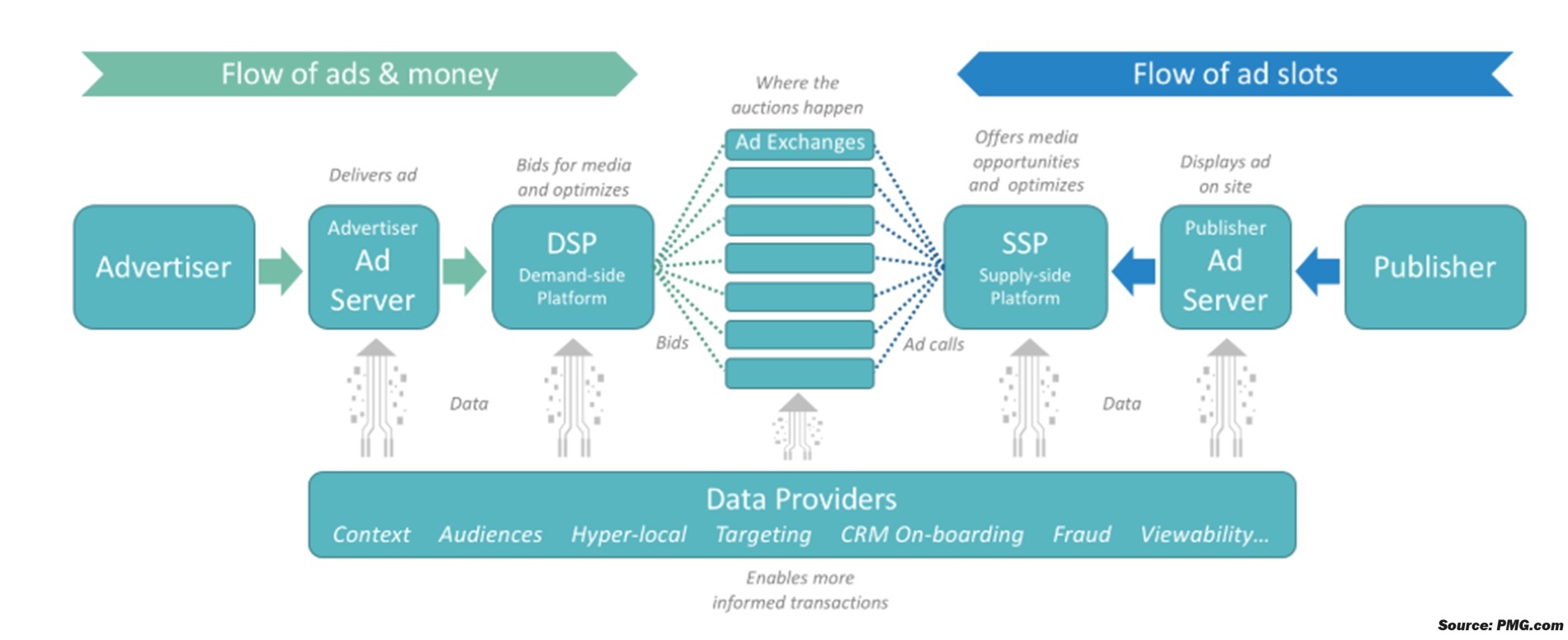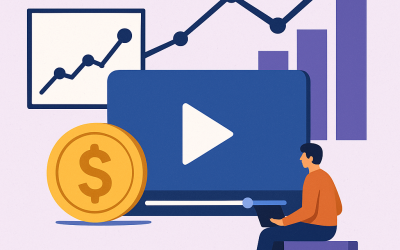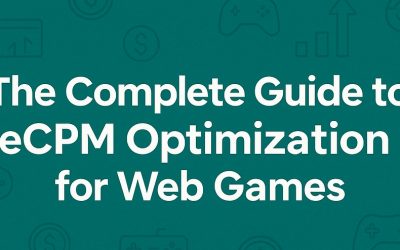A Complete guide to the Ad Monetization Ecosystem
In 2024, digital advertising spending worldwide surpassed $600 billion, highlighting the immense scale and influence of the digital ad industry. This staggering number not only underscores the importance of digital advertising in today’s economy but also reflects the complex and interconnected nature of the ad ecosystem that fuels this growth. In this “A Complete guide to the Ad Monetization Ecosystem; 2024 Version” we will thoroughly cover everything about Ad Monetization!
The post “A Complete Guide to the Ad Monetization Ecosystem” is timely and important for today’s digital landscape. Businesses and developers face a complex advertising ecosystem with many challenges. Effective ad monetization is essential for maximizing revenue and sustaining growth. The guide addresses key trends like privacy regulations and shifting consumer behavior. It also highlights the rapid adoption of programmatic advertising. By providing a clear overview, the guide helps stakeholders make informed decisions and optimize ad strategies. It ensures businesses stay competitive in a constantly evolving market.
[ez-toc]
Contents
Why Understanding the Ad Ecosystem is Crucial
Starting my paragraph on “A Complete guide to the Ad Monetization Ecosystem” post, the digital advertising ecosystem is a complex network of interconnected players and technologies that facilitate the buying and selling of ad space. Understanding this ecosystem is crucial for anyone involved in digital marketing, as it helps in optimizing ad campaigns, improving targeting, and maximizing ROI. Over the next series of posts, we will delve into each component of the ad ecosystem, exploring their roles, functionalities, and interconnections.
Understanding the ad ecosystem is not just beneficial but essential for anyone involved in digital marketing, advertising, or web monetization. The ad ecosystem comprises a myriad of players, each with distinct roles and objectives, working together to deliver targeted advertisements to the right audiences. Advertisers strive to maximize their return on investment (ROI) by reaching potential customers effectively. Publishers seek to monetize their content and traffic efficiently. Intermediaries like ad servers, demand-side platforms (DSPs), and supply-side platforms (SSPs) facilitate the smooth transaction of ad inventory, ensuring that ads are delivered to the most relevant users at the right time.
Grasping the intricacies of this ecosystem enables stakeholders to make informed decisions that enhance ad performance, optimize spend, and ultimately drive higher revenue. Continuing on the A Complete guide to the Ad Monetization Ecosystem; 2024 Version post, here is what it means for Advertisers, Publishers and more
For Advertisers
Continuing on my post, A Complete guide to the Ad Monetization Ecosystem, A deep understanding of the ad ecosystem is essential for advertisers aiming to optimize their ad spend and improve return on investment (ROI). By grasping how various components like DSPs, ad servers, and data providers work together, advertisers can make informed decisions about where and how to allocate their budgets. This knowledge enables precise targeting, ensuring ads reach the most relevant audiences, reducing wasted spend, and enhancing campaign effectiveness. Ultimately, a well-informed advertiser can craft more strategic campaigns that drive higher engagement and conversions, maximizing the impact of their advertising dollars.
For Publishers
For publishers, understanding the ad ecosystem is crucial for maximizing revenue through effective monetization strategies. Knowledge of how SSPs, ad exchanges, and ad servers function allows publishers to manage their ad inventory more efficiently and sell it to the highest bidders in real-time. By leveraging these insights, publishers can implement best practices for ad placements, optimize user experience, and increase fill rates. This leads to higher eCPMs (effective cost per thousand impressions) and overall revenue. Additionally, understanding the ecosystem helps publishers navigate industry trends and adapt their strategies to stay competitive.
For Intermediaries
Intermediaries such as ad servers, DSPs, SSPs, and data providers play a pivotal role in facilitating smoother transactions and better targeting within the ad ecosystem. For these entities, a comprehensive understanding of the ecosystem’s dynamics ensures they can offer more efficient and effective services. Ad servers can better manage and deliver ads, DSPs can enhance bidding strategies, SSPs can optimize inventory management, and data providers can improve audience insights. This leads to more accurate targeting, higher ad performance, and a more seamless advertising experience for both buyers and sellers. Mastery of the ecosystem’s intricacies helps intermediaries stay at the forefront of innovation and maintain their competitive edge.
The Purpose of This Series
Continuing on my post, A Complete guide to the Ad Monetization Ecosystem, the objective of this post, is to demystify the ad ecosystem by breaking down its components and explaining their roles and interactions in a clear and concise manner. Over the next eight posts, we will delve into the various players that make up the ad ecosystem. From advertisers and ad servers to DSPs, SSPs, publishers, and data providers. Each post will provide actionable insights and practical knowledge that can help you navigate the complexities of the ad industry more effectively.
By the end of this series, you will have a comprehensive understanding of the ad ecosystem, thats our hope-). Whether you are an advertiser looking to improve your ad spend efficiency, a publisher aiming to maximize your ad revenue, or an intermediary seeking to refine your services, this series will offer valuable guidance and insights tailored to your needs.
Stay tuned as we embark on this journey to unravel the ad ecosystem, starting with a deep dive into the role of advertisers in our next post.
The Ad Ecosystem Overview
What is the Ad Ecosystem?
So, the ad ecosystem is a complex, interconnected network that facilitates the buying, selling, and delivery of digital advertisements across various platforms and devices. It encompasses all the entities and processes involved in bringing an ad from an advertiser to the end-user. This ecosystem is the backbone of the digital advertising industry, supporting everything from simple banner ads on websites to intricate programmatic ad campaigns that leverage big data for precise targeting.
At its core, the ad ecosystem operates to match advertisers who are looking to promote their products or services with publishers who have the digital space to display those ads. However, the ecosystem is much more than just this buyer-seller relationship. It involves a multitude of intermediaries, technologies, and data exchanges that ensure ads are displayed to the right people at the right time, in the right context. Understanding this ecosystem is crucial for anyone looking to effectively navigate the digital advertising landscape. Continuing on A Complete guide to the Ad Monetization Ecosystem; 2024 Version, here are the main player >
The Main Players in the Ad Ecosystem
Moving on, A Complete guide to the Ad Monetization Ecosystem post, the ad ecosystem can be broadly divided into two primary sides: the buy side and the sell side.
-
The Buy Side:
- So, the buy side consists of entities that purchase ad space. These include advertisers (brands, agencies, and marketers) who seek to reach specific audiences with their messages.
- Advertisers are the primary players on the buy side, investing in ad campaigns to promote their products or services.
- They often work with Demand-Side Platforms (DSPs), which are automated systems that help them purchase ad inventory across various publishers efficiently and at scale.
-
The Sell Side:
- The sell side is made up of entities that sell ad space. This includes publishers (websites, apps, and platforms) that provide digital real estate where ads can be displayed.
- Publishers use Supply-Side Platforms (SSPs) to manage their ad inventory and sell it to the highest bidder in real-time auctions. SSPs help publishers maximize their revenue by offering their inventory to a broad range of potential buyers through ad exchanges.
- Additionally, Ad Servers on the sell side play a crucial role by storing, delivering, and tracking ads across the digital landscape.
How the Ad Ecosystem Functions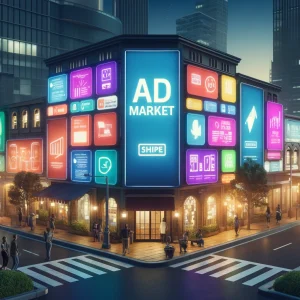
Continuing on this post entitled, “A Complete guide to the Ad Monetization Ecosystem”, the interaction between the buy side and the sell side is what makes the ad ecosystem function effectively. Here’s a simplified look at how these interactions typically unfold:
-
Ad Campaign Initiation.
First it begins with an advertiser on the buy side who defines their campaign goals—target audience, budget, and desired outcomes. This information is fed into a DSP, which automatically manages bids and buys ad space that meets the advertiser’s criteria.
-
Ad Inventory Management.
Second On the sell side, publishers list their available ad spaces through an SSP. The SSP aggregates these spaces and makes them available for purchase, often through real-time bidding processes conducted on ad exchanges.
-
Real-Time Bidding (RTB).
The DSPs on the buy side compete in these auctions by bidding for the available ad spaces. So the highest bid typically wins, and the ad is then delivered to the publisher’s site or app via an ad server. This process happens within milliseconds as users navigate websites and apps.
-
Ad Delivery and Tracking.
Once the ad is delivered, ad servers on both the buy and sell sides track its performance. Collecting data on impressions, clicks, and conversions. This data is then used to optimize future ad placements and campaign strategies.
-
Data Providers’ Role.
The fifth is Data providers’ role that play an essential role by offering valuable insights about audiences, which help advertisers target their ads more effectively. This data ensures that ads reach the most relevant users, increasing the chances of engagement and conversion.
So this intricate dance between the buy side and the sell side, facilitated by technology and data, creates a functioning ad market where both advertisers and publishers can achieve their goals. The ad ecosystem’s efficiency and effectiveness depend on the seamless integration of these components. That allows for precise targeting, real-time transactions, and optimized ad delivery. Understanding these interactions is key to mastering digital advertising!
Layout for the Series
So, continuing A Complete guide to the Ad Monetization Ecosystem. Below is what to expect in the upcoming posts.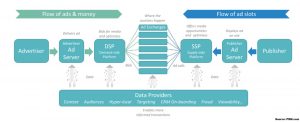
- Advertisers: Understanding the role of advertisers in the ad ecosystem, their objectives, and how they collaborate with other entities.
- Ad Servers: Exploring the technology that stores and serves ads, and its importance in the ad delivery process.
- Demand-Side Platforms (DSPs): Detailed look at DSPs, how they operate, and their role in programmatic advertising.
- Supply-Side Platforms (SSPs): Understanding SSPs, their functionalities, and how they help publishers maximize their ad revenue.
- Publishers: The role of publishers in the ad ecosystem, types of ad inventory, and challenges they face.
- Data Providers: Exploring the role of data management platforms (DMPs) and customer data platforms (CDPs) in enhancing ad targeting.
- Ad Networks: Understanding how ad networks operate, their benefits, and their place in the ad ecosystem.
- Ad Exchanges: A deep dive into ad exchanges, how they facilitate real-time bidding, and their impact on the ad ecosystem.
About AppLixir Rewarded Video Ad
Last but not least, AppLixir is a leading ad monetization platform specializing in rewarded video ads for web and mobile applications. AppLixir provids a seamless integration process and high-quality ad content. With a focus on privacy and user consent, AppLixir ensures that ads are both effective and respectful of user preferences. Visit www.AppLixir.com
